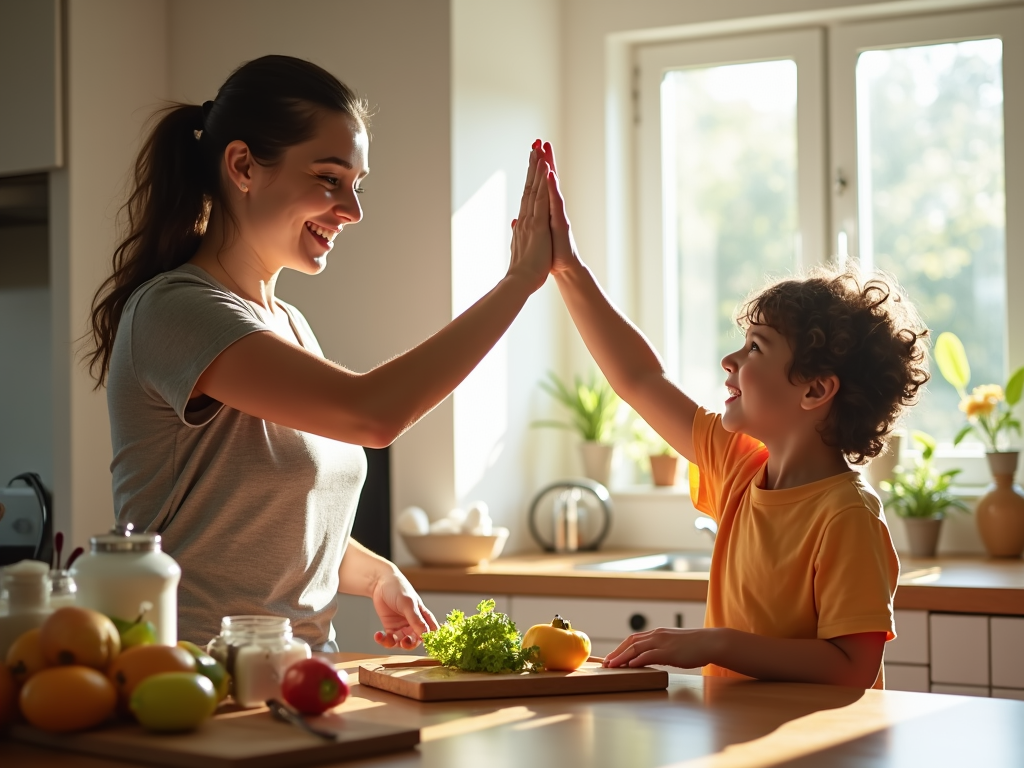Food allergies in children can feel overwhelming, but with the right nutrition tips, you can keep your child healthy and happy. This guide shares practical advice for parents, covering everything from spotting allergens to preparing safe meals. Whether your child has common allergies or conditions like FPIES, you’ll find help here.

Understanding Food Allergies in Children
Food allergies happen when a child’s immune system fights certain food proteins. Reactions can be mild, like a rash, or serious, like trouble breathing. Common culprits include peanuts, milk, eggs, and wheat. Some kids face rarer issues, like FPIES, which need extra care.
Start by knowing your child’s triggers. Check food labels, talk to doctors, and teach your child what to avoid as they grow. It’s all about staying one step ahead.
What is FPIES?
FPIES stands for Food Protein-Induced Enterocolitis Syndrome. It’s a food allergy that hits the stomach and intestines. Unlike most allergies, reactions come hours later, with vomiting, diarrhea, or even dehydration. Acute FPIES episodes can be scary, so planning ahead is a must for parents.

Nutrition Tips for Children with Food Allergies
Feeding a child with food allergies takes effort, but you can make it work. Here’s how to keep their diet balanced and safe:
- Team Up with a Dietitian: A pro can design a meal plan that fits your child’s needs without allergens.
- Stick to Whole Foods: Think fresh fruits, veggies, meats, and safe grains. No hidden surprises here.
- Master Label Reading: Always scan ingredients. Look for allergy-safe labels on packages.
- Try Substitutes: Swap milk for oat milk or peanut butter for sunflower seed butter. Kids won’t miss out.
- Get Kids Involved: Show them what’s safe and let them help cook. It builds confidence.
These steps turn challenges into wins.
Sample Allergy-Friendly Meal Plan
Need ideas? Here’s a day’s menu for a child with dairy and nut allergies:
| Meal | Menu |
|---|---|
| Breakfast | Oatmeal with berries and oat milk |
| Lunch | Turkey and avocado wrap (safe wrap) |
| Snack | Apple slices with sunflower butter |
| Dinner | Grilled chicken, veggies, and quinoa |
Tweak it for your child’s allergies!

Understanding Food Allergies: Building Safe School Environments
School can be tricky for kids with allergies, but you can make it safer. Try these:
- Talk to Staff: Tell teachers and nurses about your child’s allergies. Share what to do if something goes wrong.
- Set Up an Emergency Plan: Make a clear plan for reactions, especially for acute FPIES. Include steps for epinephrine if needed.
- Pack Smart Lunches: Send safe, fun meals. Bright containers keep it exciting.
- Teach Friends: Help classmates understand allergies. It cuts down on risks.
A little prep goes a long way.
Acute FPIES and School Safety
Kids with FPIES need extra school safeguards. Reactions might not show up right away, so train staff to spot signs like vomiting or paleness. Give them a list of safe foods and a game plan if a trigger slips through. It’s about peace of mind.

My Story: Living with Food Allergies
I’ve got a kid with allergies to milk, eggs, and nuts. It’s been a journey. I pack safe snacks everywhere—parks, parties, you name it. I’ve taught my little one to ask, 'Is this safe?' before eating. We’ve had bumps, like a surprise reaction at a picnic, but we’ve learned. The key? Stay ready and keep it positive. Allergies don’t stop us from fun—they just make us smarter about it.
Making It Work Every Day
One trick I’ve found: keep a stash of safe treats for unexpected moments. Another is cooking together—my kid loves mixing allergy-free cookie dough. It’s not just about safety; it’s about them feeling normal and included.

Tips That Stick
Here’s what I’ve learned:
- Plan Ahead: Always have a safe backup, whether it’s food or an action plan.
- Stay Calm: Reactions happen. Know your steps, and don’t panic.
- Celebrate Wins: Every safe meal or fun event is a victory.
You’ll get the hang of it with time.
Summary
Raising a child with food allergies means staying alert and creative. From nutrition tips to school safety, it’s about building a world where they thrive. Focus on safe foods, smart planning, and teamwork with schools and doctors. You’ve got this—millions of parents do it every day.

Discuss Here